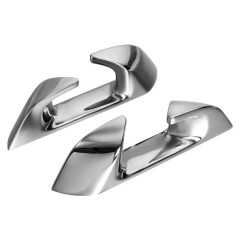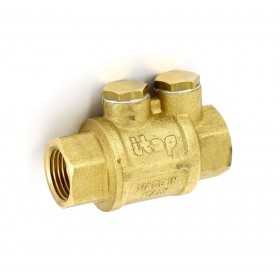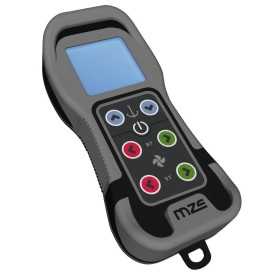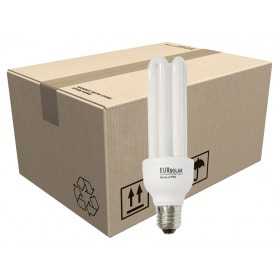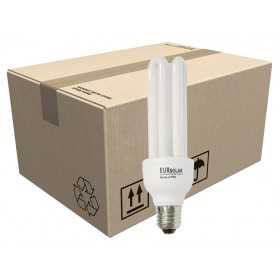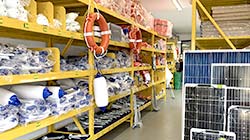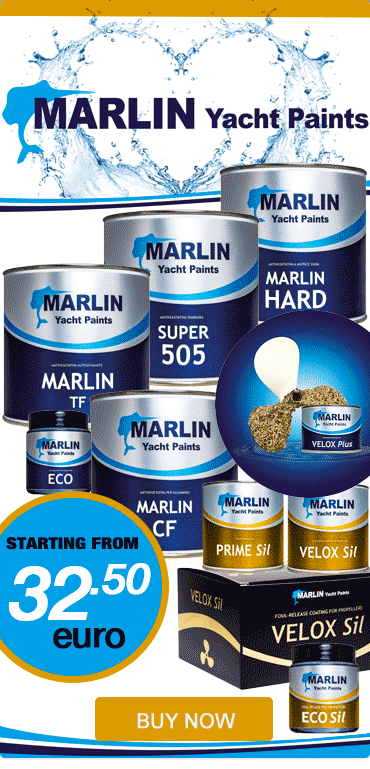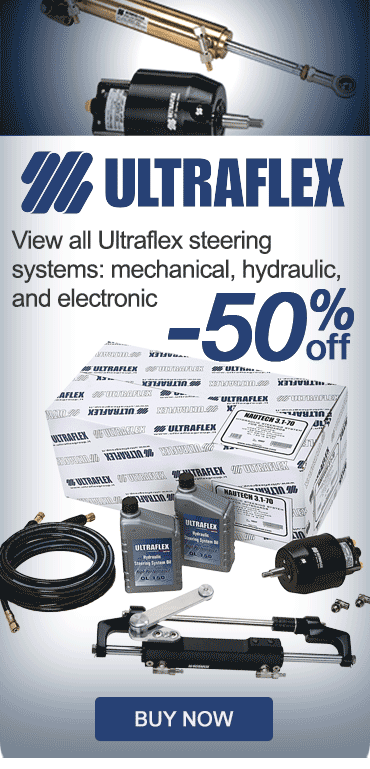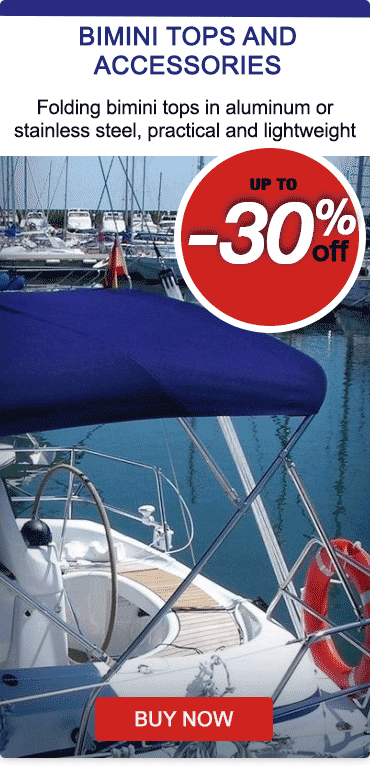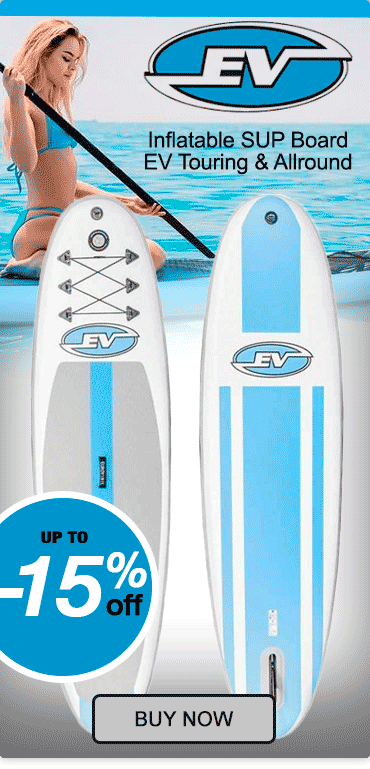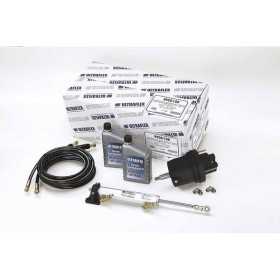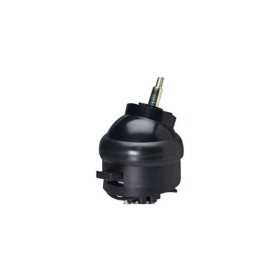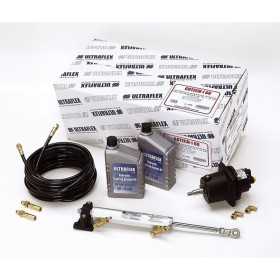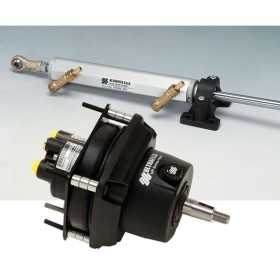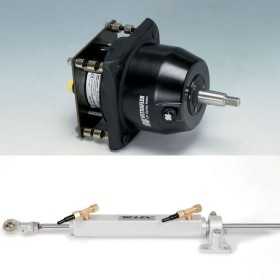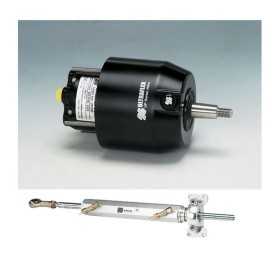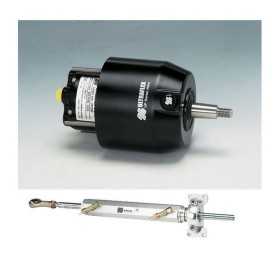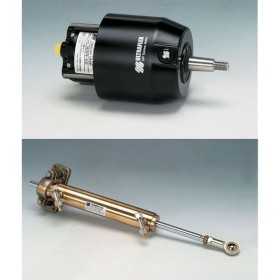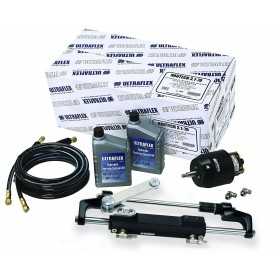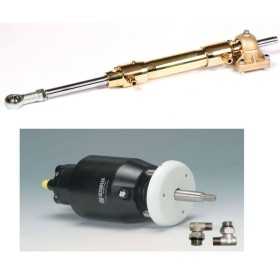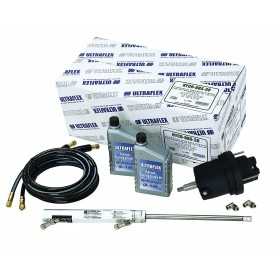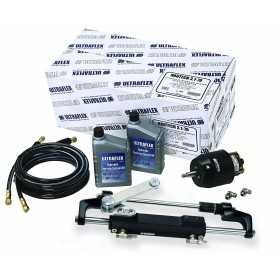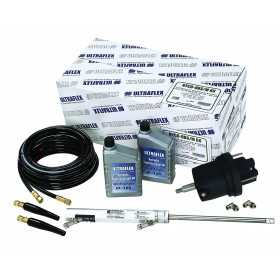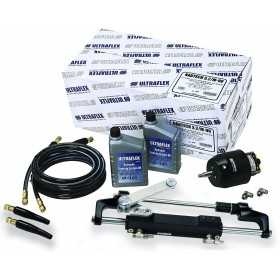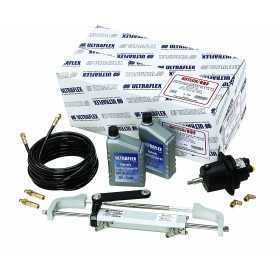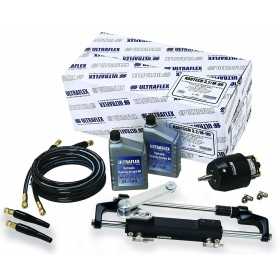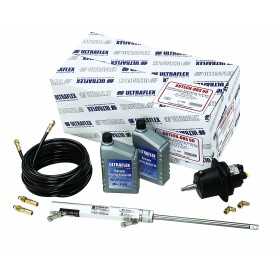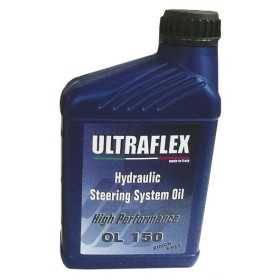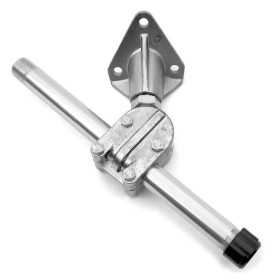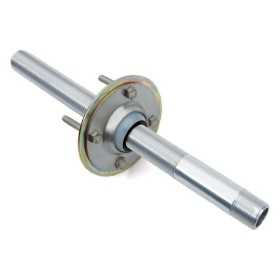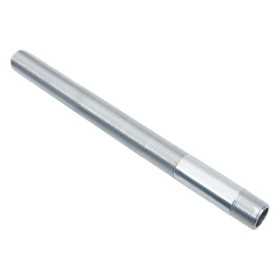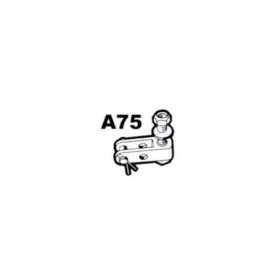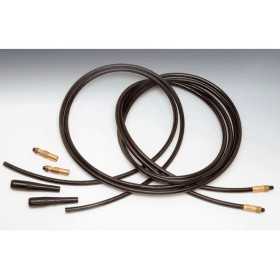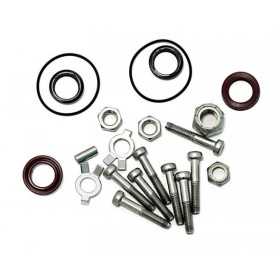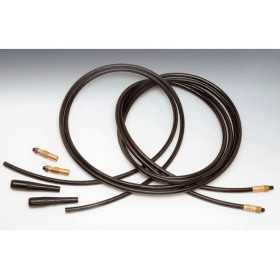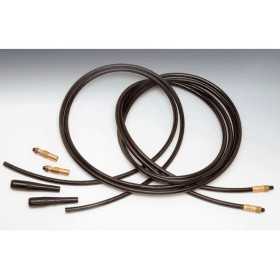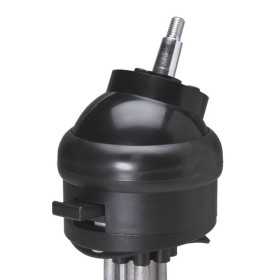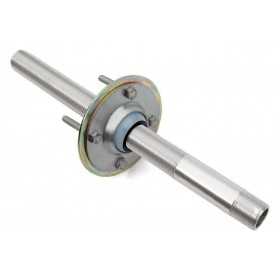Ultraflex Hydraulic steering systems and accessories
Subcategories
Ultraflex hydraulic steering systems for outboard
All components of Ultraflex hydraulic systems are specifically designed for the marine environment, using materials and manufacturing processes that offer great durability and safety even in the most extreme conditions.
How the Hydraulic Steering System Works
The boat's hydraulic steering system consists of a pump located on the dashboard, a cylinder positioned at the stern and connected to the helm or engine, and two connecting nylon or copper hydraulic hoses.
Rotating the steering wheel pumps oil, which, depending on the direction of rotation, flows through one of the two hoses to
one of the two chambers of the cylinder.
The resulting movement of the piston causes the oil to flow from the second chamber of the cylinder to the pump through the second hydraulic hose and at the same time moves the vessel's rudder to which the cylinder rod is connected. The pumps are equipped with a pumping system and a valve. The valve prevents oil flow to the pump if it is not operated (non-reversibility effect). It also allows systems with two or more steering stations to operate.
The cylinders are double-acting and can be balanced or unbalanced. In unbalanced cylinders, the two chambers have different volumes and therefore require different numbers of steering wheel turns for the same movement in both directions. Balanced cylinders require the same number of steering wheel turns to move the rudder from center to end position in both opposite directions.
Tips and warnings when choosing a hydraulic steering system
The effort required to steer a vessel equipped with a hydraulic steering system is inversely proportional to the number of
turns of the steering wheel from lock to lock. The number of steering wheel turns is determined by the ratio between the cylinder volume and the pump flow rate.
For the same cylinder size applied to the engine, the fewer the turns of the steering wheel, the greater the effort required to steer, as steering is more direct.
While a greater number of turns of the steering wheel results in a more direct steering, the effort required is reduced.
Other factors that influence the effort required to steer a vessel are:
• The vessel's speed
• The size of the rudder, or the engine's power
• The propeller selection
• The hull type (planing, displacement, etc.)
• The sea conditions
• The type of hydraulic oil used
Ultraflex hydraulic steering systems for in-outboard engine
Ultraflex hydraulic steering systems for in-outboard engine
Accessories for hydraulic steering systems
Accessories for hydraulic steering systems
There are 29 products.




